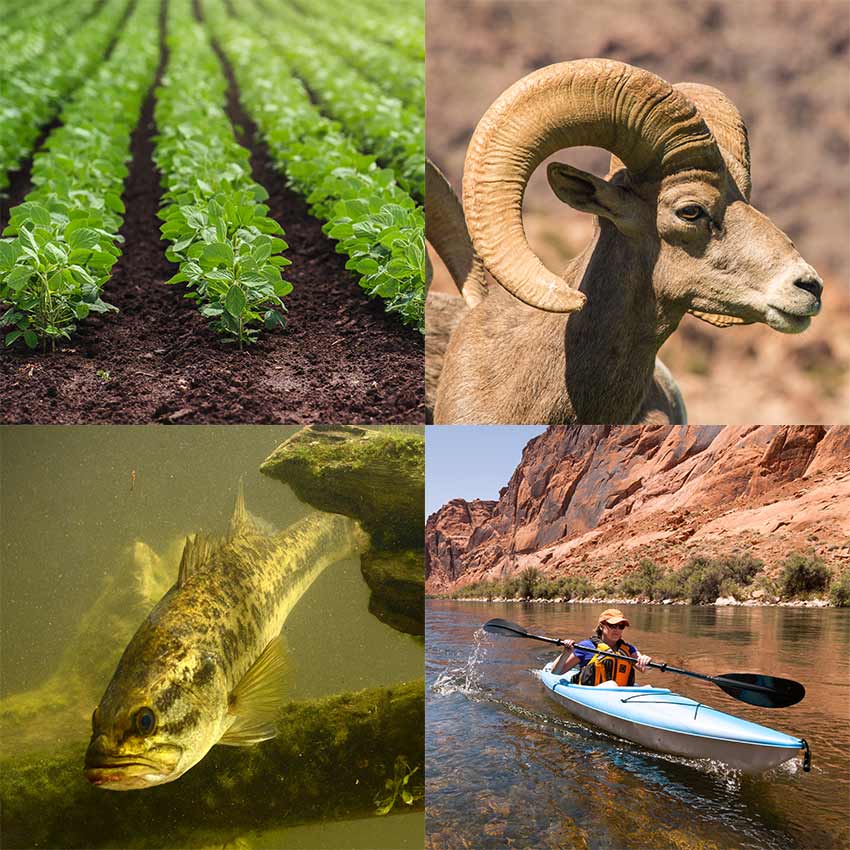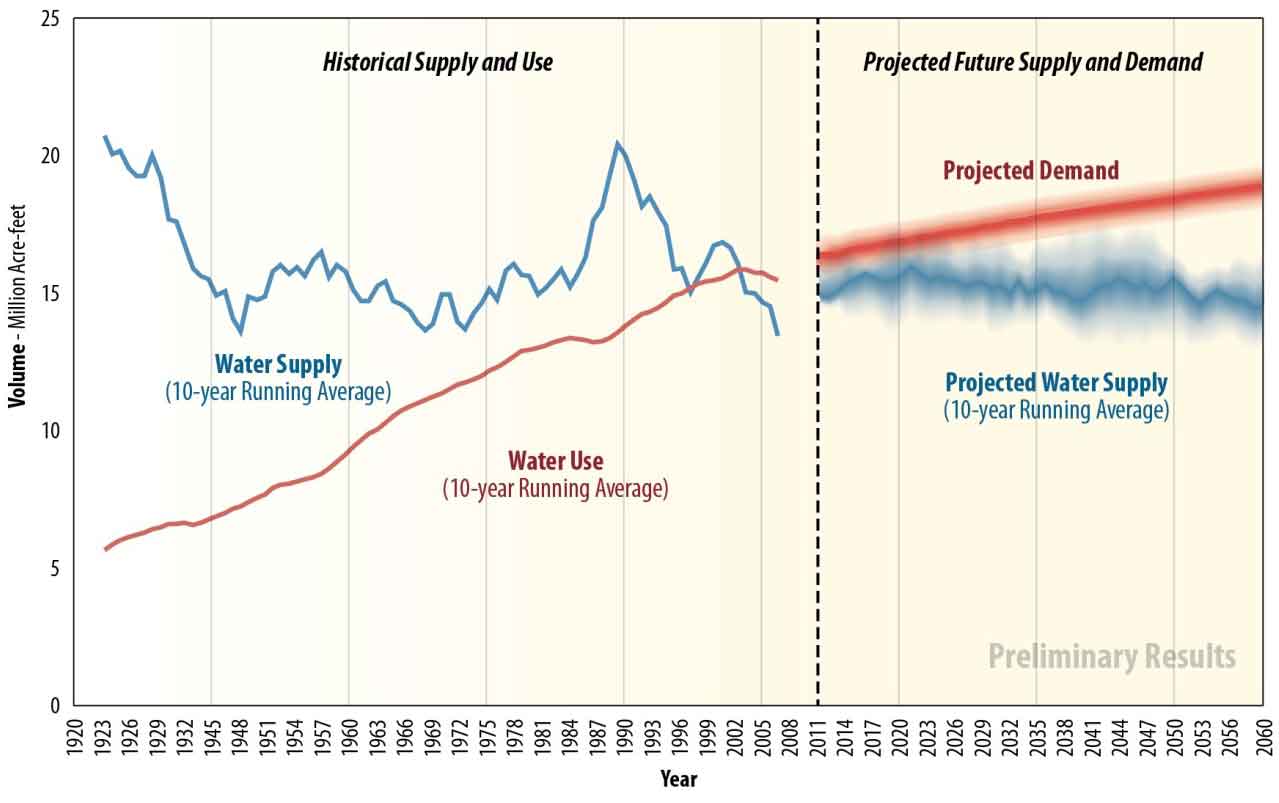|
Water is a vital commodity for everyone living in the Colorado River watershed. We need it for our cities and towns, farms, ranches, to swim and fish in - and other living things need the water too. From the bighorn sheep that drink from the shores of Lake Mohave, to the striped bass that roam the full expanse of Lake Mead, there are a host of organisms that rely on water everyday including us. 
Water from Lake Mead is a vital commodity for everyone. More and more people are moving to the states and areas supplied by Colorado River water. At the same time, the last sixteen years have seen extensive drought and a lesser supply of the Colorado River. Weather studies to look at potential impacts of climate change indicate that there may be less precipitation and water available in the Colorado River in the future. So how do we balance all of our needs in the face of changing conditions? There have been some contentious fights over the years for water in the west. Each group that utilizes water along the river has differing needs and priorities. The current drought has prompted the seven Colorado River basin states and the U.S. Bureau of Reclamation to work together to ensure that water supply could meet water demands well into the future. Together, they developed the Colorado River Basin Water and Demand Study that projected future water availability, future water needs, projected shortfalls in water supply, and options to make up for projected shortfalls. The Moving Forward InitiativeThe study projects that by 2060 water demand will exceed supply by greater than 3.2 million acre feet annually (an acre foot on average is enough water for five people for one year). To work on solutions related to the potential water supply shortages suggested by the basin study, the seven Colorado River basin states and the Bureau of Reclamation have organized an effort called Moving Forward. Moving Forward engaged over 100 stakeholders in a series of meetings involving three work groups:

Graph from U.S. Bureau of Reclamation Colorado River Basin and Demand Study showing trends in water supply and demand. These groups worked as teams to understand and document past issues and practices and to identify what might happen in the future regarding water challenges. Their work has resulted in the identification of overarching factors leading to recommendations including water use along the Colorado River watershed:
From there, the workgroups looked for potential actions in each of their subgroups that could work towards a sustainable water future for Colorado River watershed. A few examples are outlined in the chart below. Keys to a sustainable FutureMunicipal & Industrial
Agricultural
Environmental & Recreational
Successful strategies for the Colorado River watershed stakeholders will mean working together and creating a sustainable future for all groups involved. Forward thinking is a key factor and will require the following:
Now the workgroups are moving forward, trying to make these ideas for conservation a reality. This multi-state, regional initiative is on its way to finding solutions to the issues that plague the Colorado River watershed and those who depend on it. Related Links |
Last updated: April 4, 2017
